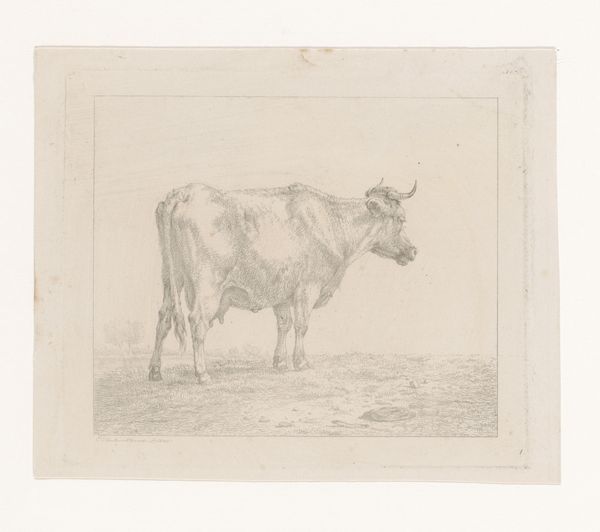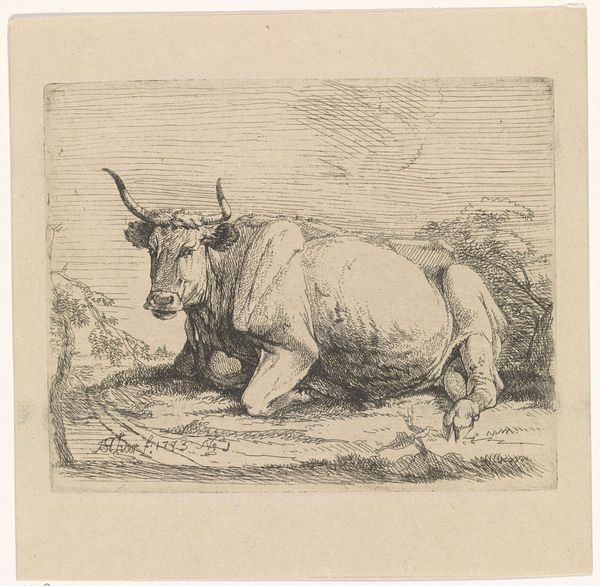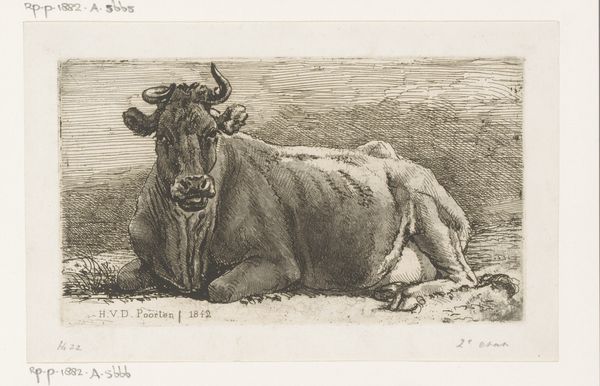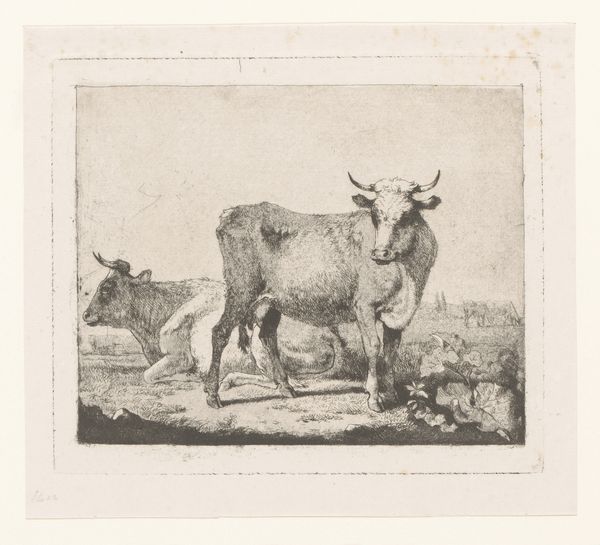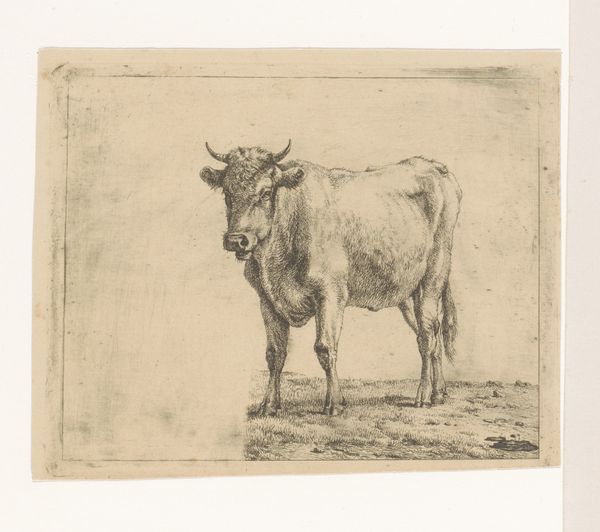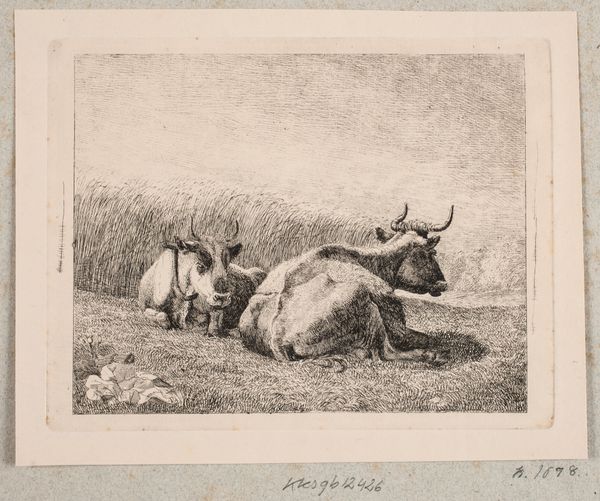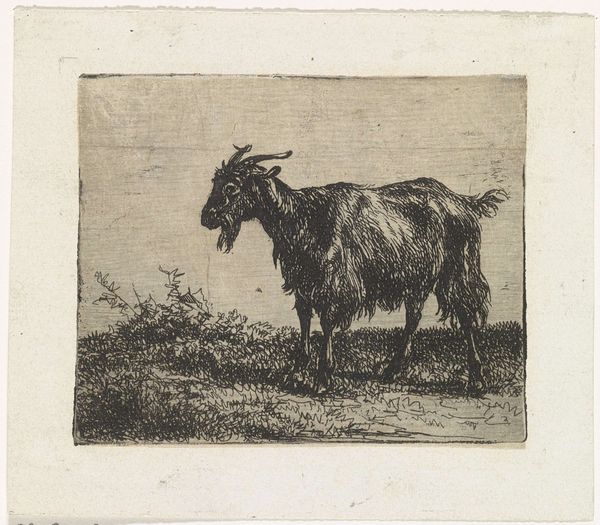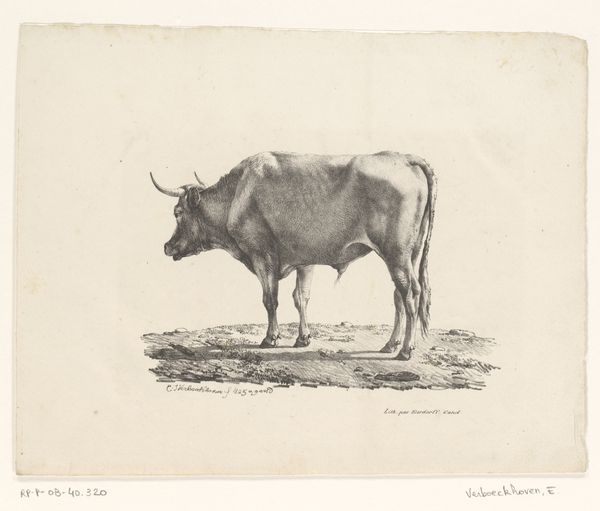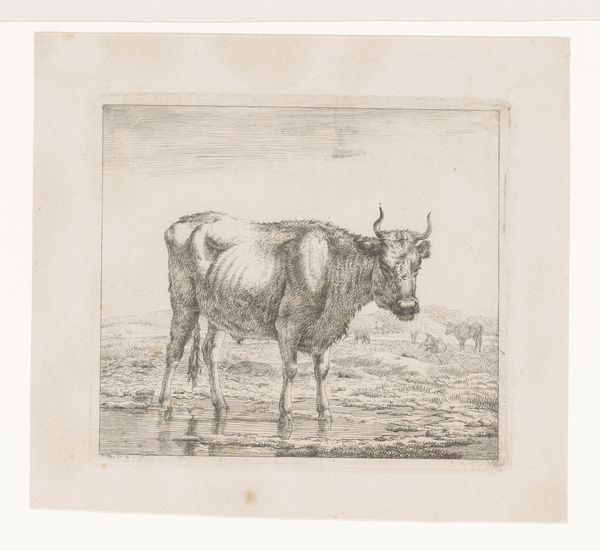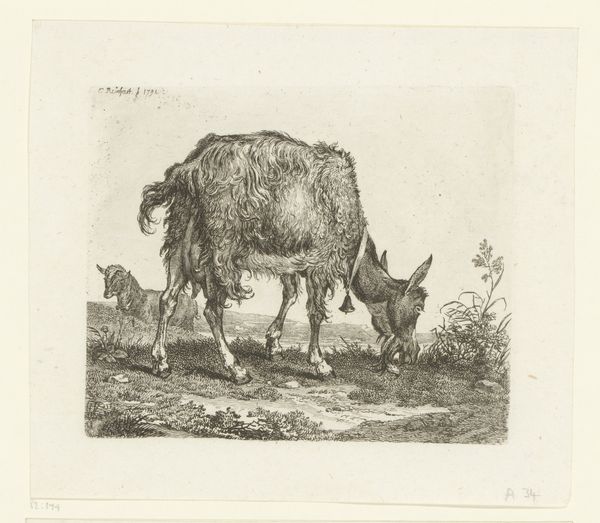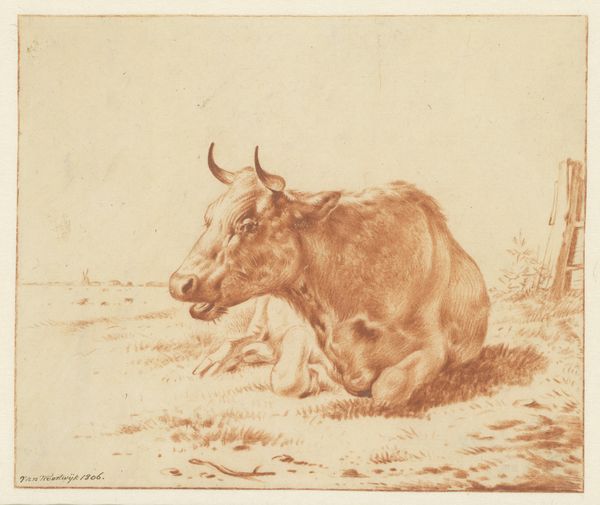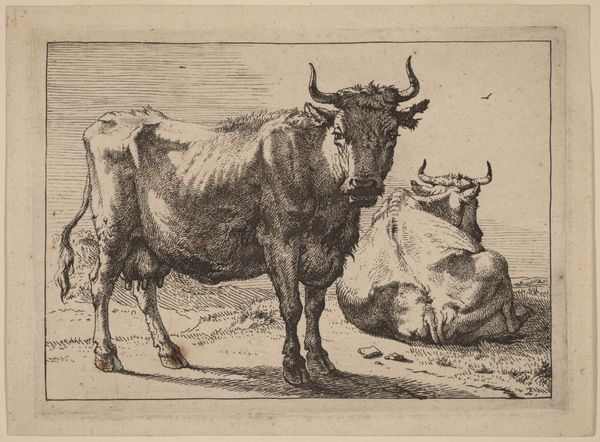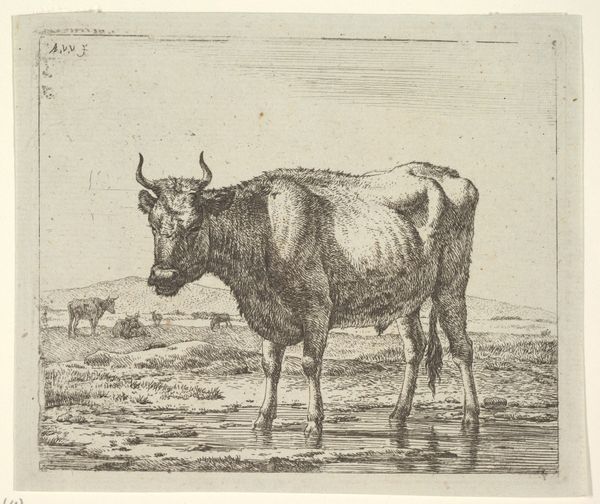
etching
#
animal
#
etching
#
landscape
#
charcoal drawing
#
realism
Dimensions: height 106 mm, width 130 mm
Copyright: Rijks Museum: Open Domain
Editor: This is "Liggende koe" - or "Reclining Cow" - by Eugène Verboeckhoven, created in 1828. It's an etching, and I’m struck by how realistic it is. It feels very grounded and peaceful. What do you see in this image? Curator: I see a profound connection to the land. Consider the cow itself: for centuries it's been a symbol of fertility, nourishment, and the pastoral ideal. Think of ancient goddesses associated with cattle – what emotional resonance does that cultural memory evoke here? Editor: That's interesting! I hadn't considered the cow as a symbol with so much history. It's more than just a farm animal. Curator: Exactly. The image itself, an etching, gives us a clue: in the 19th century, an etching was not merely documentation, it’s engagement with a pictorial language with established modes of appreciation. Does the relative flatness of the landscape and the almost stark, unadorned representation of the cow change how we view the animal? Editor: Perhaps, without other obvious details, it invites the viewer to focus on the cow and what it represents. Its symbolic value is amplified. Curator: Precisely. What emotions do you think the artist hoped to evoke through this imagery? Do you feel any connections with contemporary attitudes towards the pastoral? Editor: It seems that Verboeckhoven connected with the animal as part of its surrounding natural scenery and through Realism made it more of an authentic part of a bigger whole, right? I learned to see how symbols, history, and an artist’s approach all come together in one work! Curator: And I'm glad you do, too. Considering art from that perspective allows us to build pathways that deepen our visual appreciation and intellectual inquiry.
Comments
No comments
Be the first to comment and join the conversation on the ultimate creative platform.
